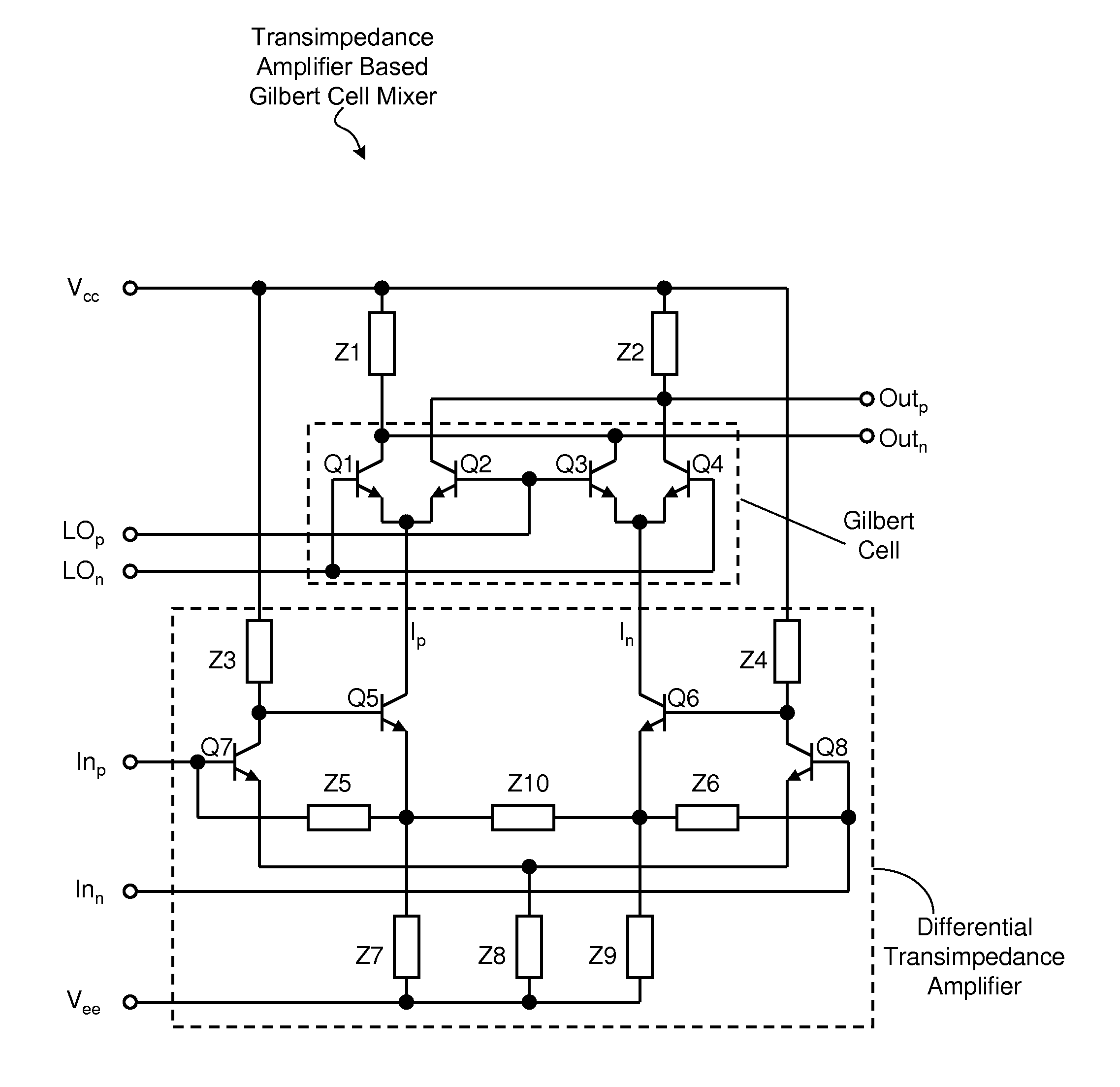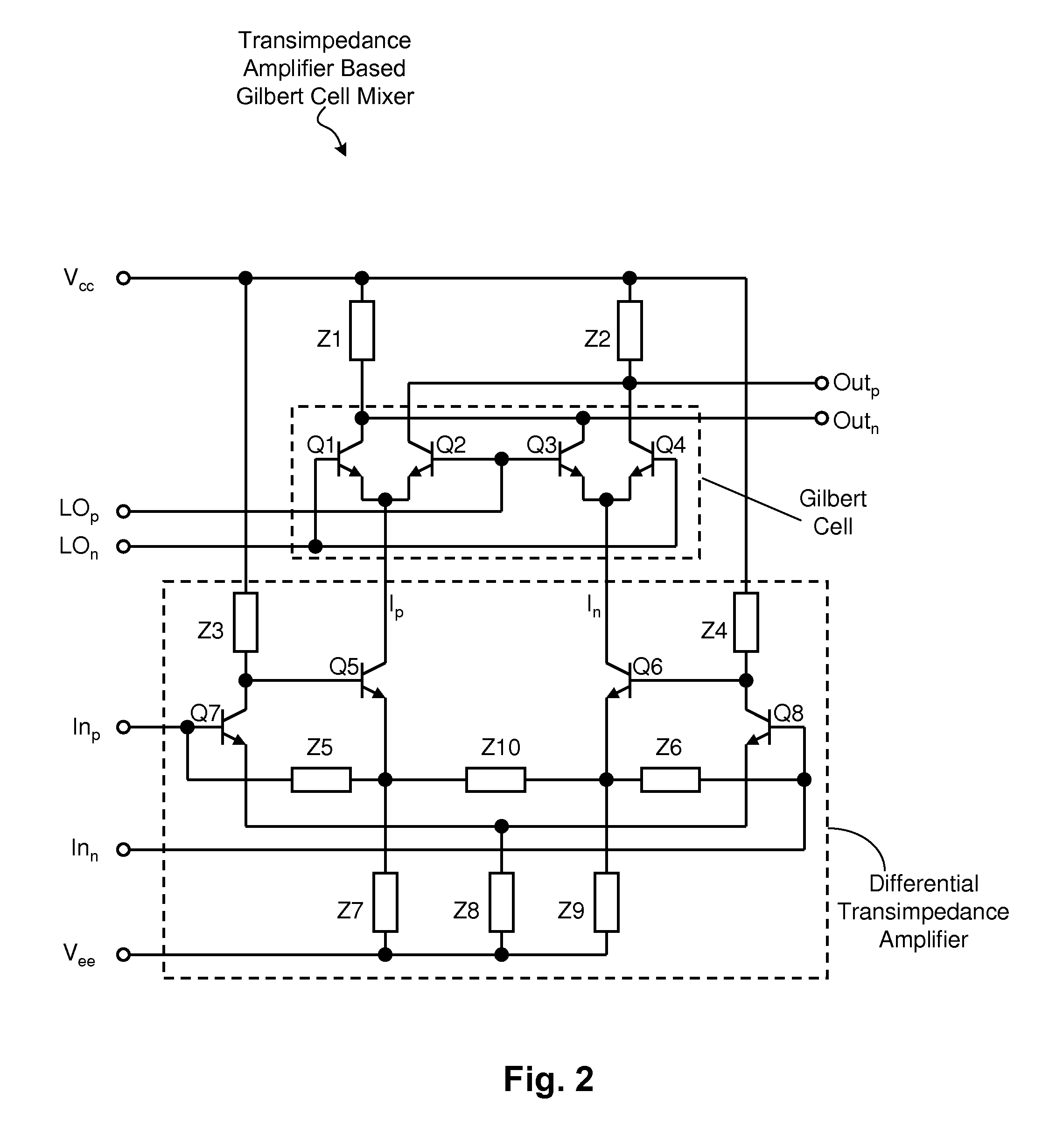Transimpedance Amplifier Input Stage Mixer
a transconductance differential amplifier and input stage technology, applied in the field of mixer circuits, can solve the problems of poor linearity of the transconductance differential amplifier input stage, direct, negative impact on the noise performance of the gilbert cell mixer, etc., and achieve the effect of facilitating the rejection of common mode input signals
- Summary
- Abstract
- Description
- Claims
- Application Information
AI Technical Summary
Benefits of technology
Problems solved by technology
Method used
Image
Examples
Embodiment Construction
[0014]A Gilbert cell mixer design is disclosed. Instead of using a differential transconductance stage as typically done, the design employs a differential transimpedance amplifier input stage. By utilizing a transimpedance input stage to the Gilbert mixer, feedback is used to obtain higher linearity without sacrificing noise performance. The transimpedance input stage supplies a current signal to the cascode connected Gilbert switching quad, so the transimpedance amplifier output is taken from the collector of the transimpedance amplifier output transistor, instead of the emitter as typically done with transimpedance amplifiers.
[0015]General Overview
[0016]As previously explained, a typical Gilbert cell mixer utilizes a transconductance input stage, as illustrated by the circuit of FIG. 1. As can be seen, the circuit includes a differential transconductance amplifier stage (RF input stage) operatively coupled to a Gilbert cell (mixing stage). The power supplies of Vcc and Vee are pr...
PUM
 Login to View More
Login to View More Abstract
Description
Claims
Application Information
 Login to View More
Login to View More - R&D
- Intellectual Property
- Life Sciences
- Materials
- Tech Scout
- Unparalleled Data Quality
- Higher Quality Content
- 60% Fewer Hallucinations
Browse by: Latest US Patents, China's latest patents, Technical Efficacy Thesaurus, Application Domain, Technology Topic, Popular Technical Reports.
© 2025 PatSnap. All rights reserved.Legal|Privacy policy|Modern Slavery Act Transparency Statement|Sitemap|About US| Contact US: help@patsnap.com



